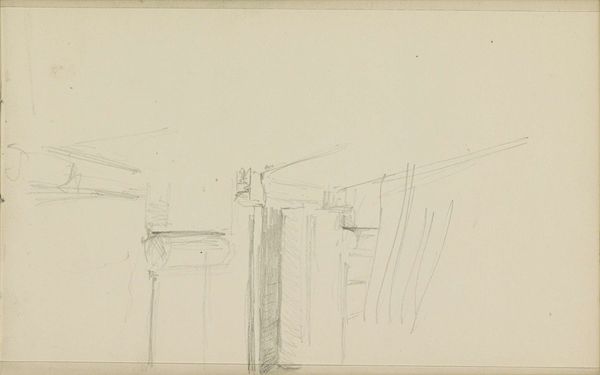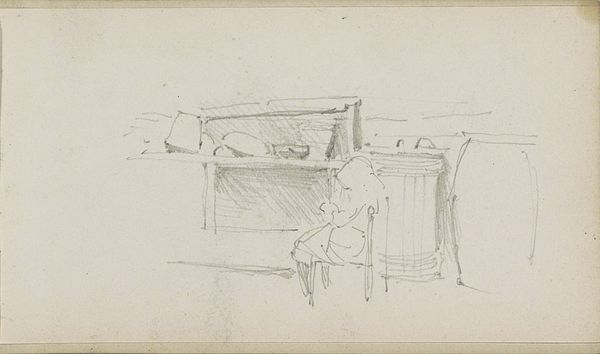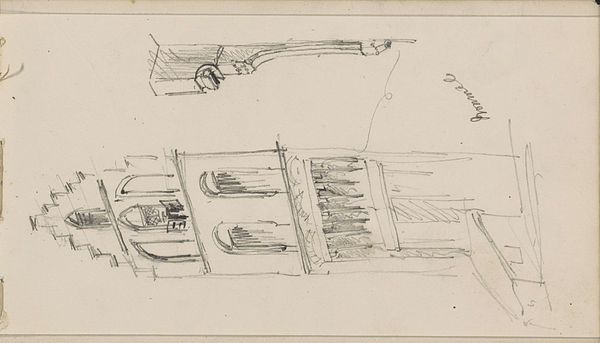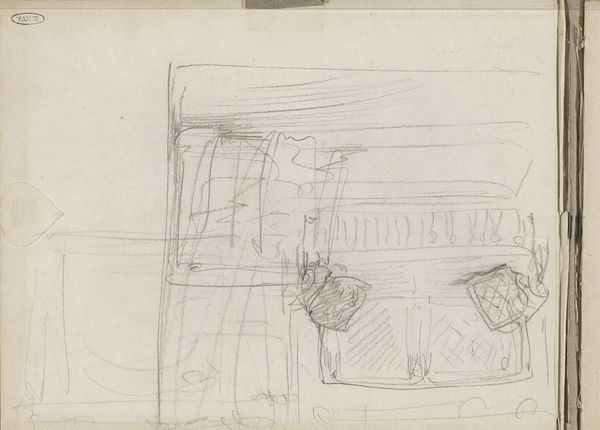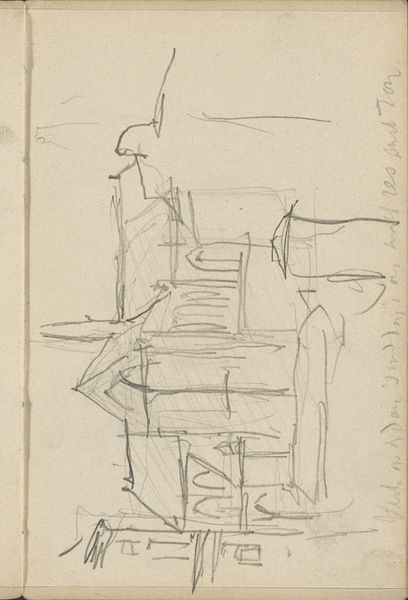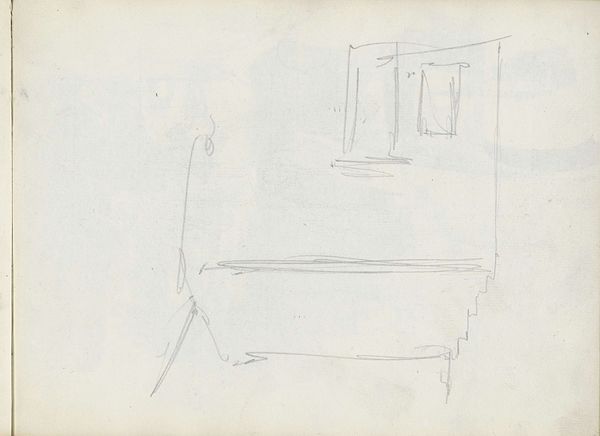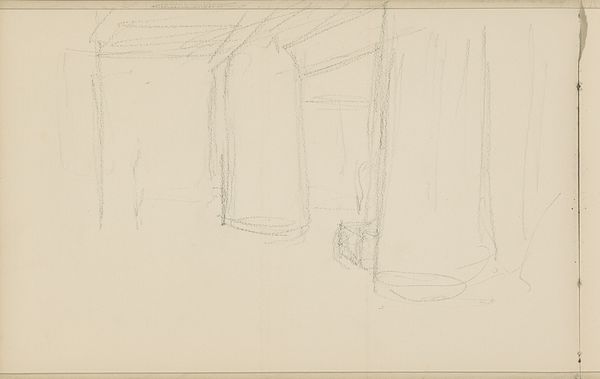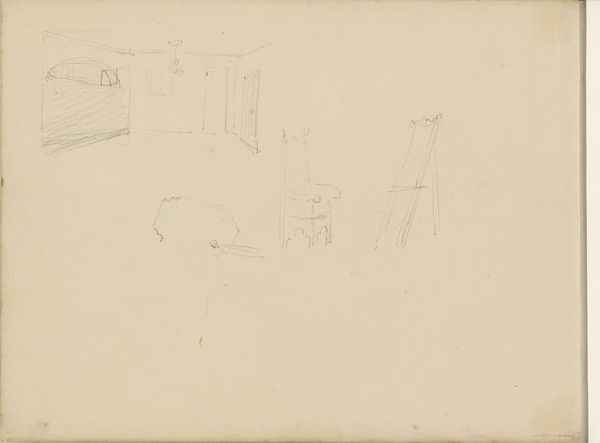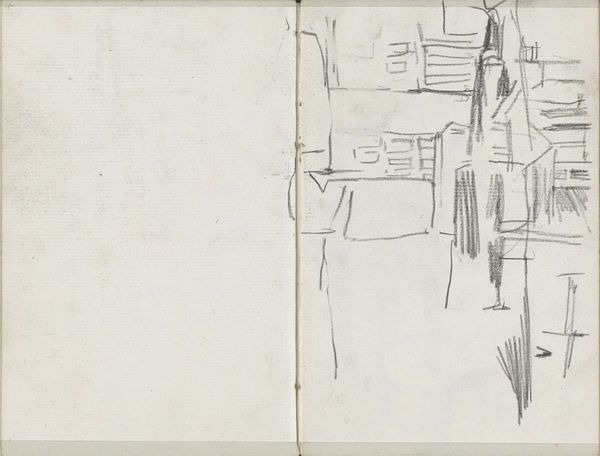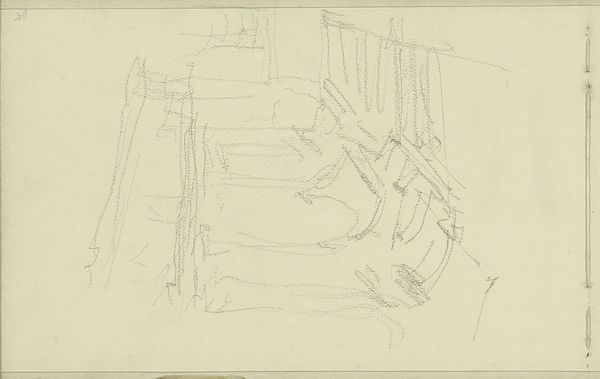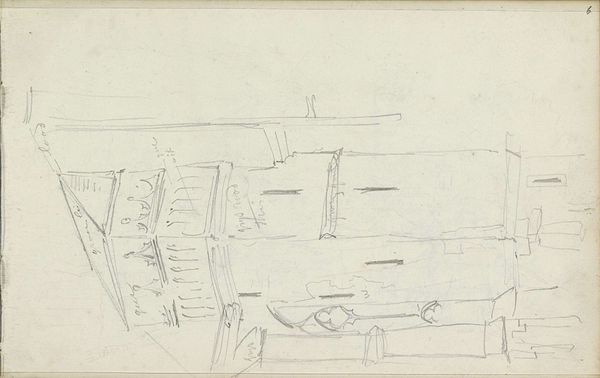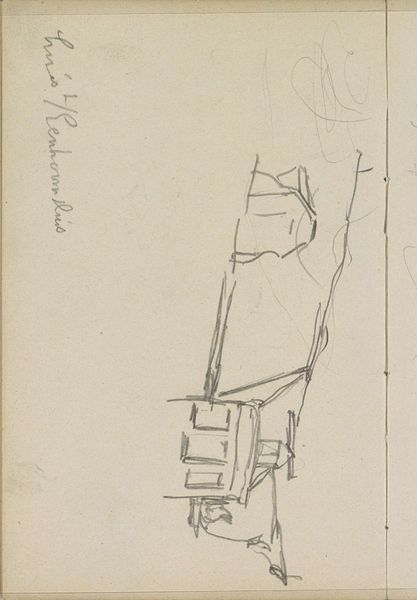
drawing, paper, pencil
#
drawing
#
dutch-golden-age
#
pencil sketch
#
landscape
#
etching
#
paper
#
form
#
pencil
#
line
#
realism
Copyright: Rijks Museum: Open Domain
Curator: Here at the Rijksmuseum we have "Three Pews in a Row," a drawing by Johannes Bosboom, dating sometime between 1845 and 1891. It appears to be a preliminary sketch done with pencil on paper. Editor: Stark! Immediately I’m struck by how austere this rendering is. You can almost feel the coolness of the stone floor, the unyielding nature of the wood. There's very little warmth conveyed. Curator: The interesting thing to me is how the composition centers around line, an almost abstract quality amidst realism. Look at how the parallel lines of the pews establish the perspectival space, guiding your eye into the imagined depth of the church interior. It's line work over representation. Editor: Yes, and considering the social dynamics inherent in church seating—the designated spaces reflecting hierarchy and community standing, that bare materiality, the method of their production using readily available lumber speaks of function over ornamentation and faith over wealth. It’s raw and fundamental. I’d be keen to look at lumber milling processes in Bosboom’s time and church patronage models during those decades in Amsterdam. Curator: I agree, and I also see a contrast here; Bosboom employs this rapid sketching technique. There's something almost devotional about this repeated drawing, echoing perhaps the ritualistic practice of worship itself. These hard lines express so much. Editor: Good point. These materials represent spiritual labor—the communal aspect. Those pews hosted countless acts of worship. What were the historical labor relations of carpentry during the Golden Age? Where did that lumber come from, and under what exploitative systems was it harvested? The social value is inscribed into that sketch. Curator: I think the lack of detail and the conscious focus on basic form lends the piece a sense of timelessness. This isn't a specific place, but an evocation of the solemn, formal, architectural aspect that is also an experience in space, line, shape, and shade. Editor: Yes, it's through its materials, those three, repeated forms and their construction where those unquantifiable spiritual moments solidify. Curator: It has definitely been a lesson on considering the many interpretations layered within. Editor: Precisely, giving voice and meaning to the silence etched in these wooden forms.
Comments
No comments
Be the first to comment and join the conversation on the ultimate creative platform.
